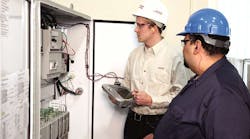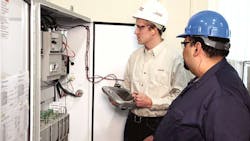Industrial manufacturing plants that have operated for 10, 15, and 20 years or more are constantly facing the same question when dealing with their legacy equipment: upgrade or modernize? Many may think that these phrases are the same. However, when it comes to the industrial world, there are obvious differences. A recent article from Rockwell Automation highlights how to define modernization vs. upgrading, and how one can go about doing one or the other.
Modernization vs. Upgrade
The difference between modernization and upgrade boils down to scale and investment. When one upgrades a part of their industrial process, they are upgrading a specific machine or production line. This is to address an outdated technology or a particular piece of equipment that isn’t working as optimally as it should. This is a smaller investment that provides a quick turnaround. It is a one-for-one replacement process for aging parts.
Modernization is the overhaul of an entire production process. This involves several pieces of equipment being upgraded, not just one piece. It involves applying contemporary technology to solve obsolete equipment and processes, which improves future productivity and helps future-proof a production line. This type of investment is larger in scale and requires significant time to execute properly.
Perform a Checklist
When determining on whether to upgrade or modernize, ask yourself these questions:
Are we struggling to meet continuously changing consumer demand?
- Modernize: Not being able to meet customer demand lies on outdated processes and systems, not just a single piece of equipment.
Do we need to cut operating costs, improve productivity, or reduce downtime?
- Modernize: If you are plagued by high production costs and excessive downtime, modernizing your system will help streamline your process and improve efficiency.
Do we need to have end-to-end visibility of our operations or access to our data to be more responsive and identify process improvement opportunities?
- Modernize: New systems and equipment are now Internet of Things (IoT) -enabled. They have built-in sensors and offer connected level equipment to acquire data at all points along the production process.
Do we need to capture preliminary data for future production line enhancement?
- Upgrade: There are several methods for adding modern IoT sensors and data-capturing equipment to existing production lines without overhauling an entire system. While it may not capture the entire end-to-end process, it should provide preliminary data to work off while you develop a modernization plan.
Do we need to migrate from a discontinued product to reduce risk or add a new feature to an existing product?
- Upgrade: A particular product could require the subtraction or addition of single production step. That can be solved by a single piece of hardware upgrade.
Do we have a single point of failure in a production line causing delays?
- Upgrade: If your production line is constantly failing, but at a specific point, an immediate upgrade could solve the issue while a plan for modernization is developed.
Rockwell Automation’s Installed Base Evaluation provides thorough analysis of critical plant assets and conditions. This allows companies to perform data-driven decisions on whether to upgrade or modernize, and how.
Justifying Cost
Modernization usually encounters resistance due to its high cost and time-consuming process. Many prefer to upgrade because it is faster and costs less. Here are three steps to help justify the cost.
- Collect data about your current production state.
Automation companies offer evaluation of production systems. Through onsite data collection and software evaluation, an analysis of the system can provide insight into a company’s most critical assets, reduce risk cause by obsolete equipment, and manage inventory. - Take the correct steps with the biggest impacts.
Collecting data on the system enables engineers to determine where to make the right moves. These steps should provide the largest impact and solve the biggest risks in your system. - Layout your short- and long-term plans.
Several actions can be performed immediately to see the instant returns. Then there are steps that will take time to execute. Define your scope based on the system requirements, the opportunities for production improvements, and scheduling considerations. Lastly, determine your overall budget and expected return on investment.


